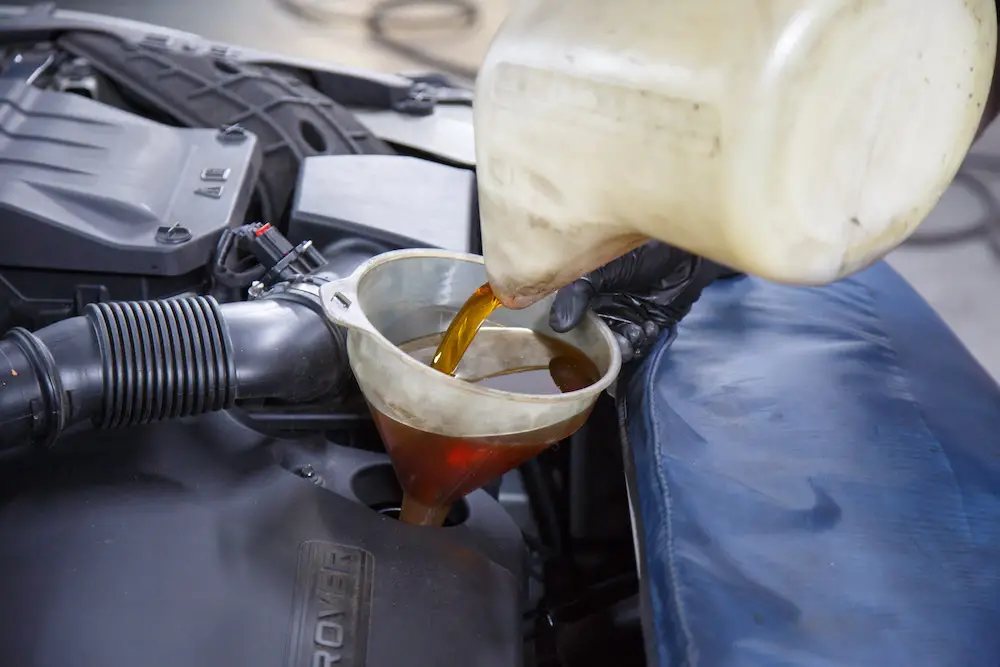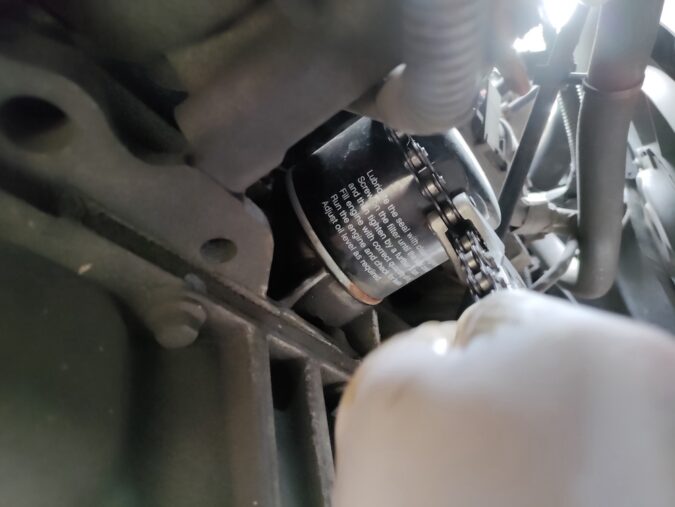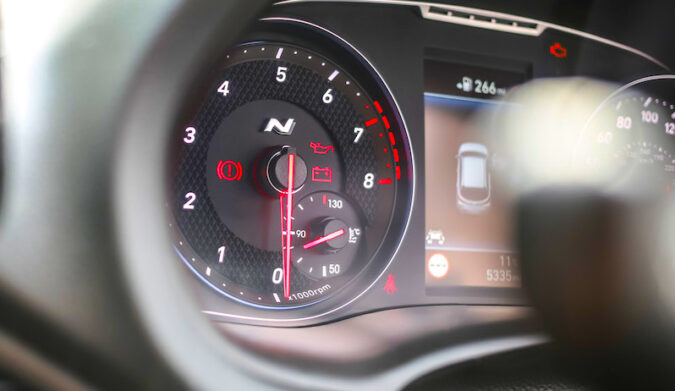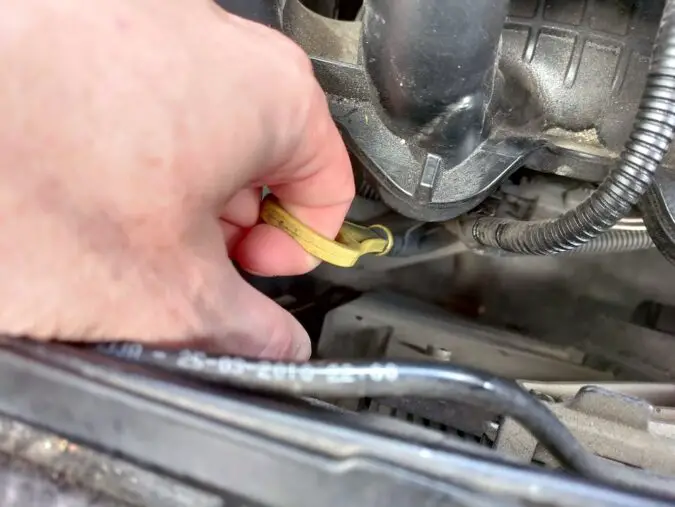If the engine is the heart of the car then the oil pump is the engine’s heart. Oil pump replacement is a crucial part of ensuring your car’s engine is in tip-top shape. This is because the oil pump plays a very important role in supplying lubricant to the engine parts and ensuring everything runs smoothly. It also helps to provide system pressure.
For easier navigation throughout this post, use our table of contents below.
- Oil Pump Replacement Cost
- Bad Oil Pump Symptoms
- Engine Oil Pump Location
- Oil Pump Part Of Engine
- Bad Oil Pump Sound
- Wrong Oil In Car Symptoms
- Bad Oil Pump Knocking
- Frequently Asked Questions
The majority of oil pumps are set on the distributor shaft or the camshaft. Often the pumps comprise a couple of gears that are set inside a housing. If the teeth of the gear come out of the mesh they will create a space that is then filled up by the oil that gets in via the pump inlet.
The oil will then pass through the passage that is between the teeth of the gear. Once the oil is forced to go through the teeth and then the oil passage, there is resultant pressure.
If the oil pump is faulty, it places the entire engine at risk of damage. Often it starts out as a loss of oil pressure, and a lack of lubrication until eventually, the engine fails.
Oil Pump Replacement Cost
The oil pump replacement cost can be anywhere from $300 to $2500. The main determinant is the type of car as well as the labor involved.
The parts themselves can cost between $100 and $500 while the labor costs can be from $200 to $2000.
There are several factors that you need to consider when calculating the oil pump replacement cost. First off are the parts involved. You will need the oil pump which can cost anywhere from $50 to $150.
Secondly, you will also require a gasket for the oil pan. There is also a good chance that you will require an oil pan gasket.
Depending on the vehicle model, you may find that you need to change the gaskets that are part of the oil pump system. The total price of the gaskets will add up. You may also find that you’ll spend as much as $150 to $220 on the gaskets alone.
Talking about repairs, the mechanic may take anywhere from 4-8 hours to change the gasket. This will further push up the oil pump replacement cost.
This is why it is best if you could make the replacement yourself as the only cost you would incur is the cost of the oil pump and the gaskets involved.
Bad Oil Pump Symptoms
When the oil pump is faulty, there are several bad oil pump symptoms that you can use to identify this. These can also be wrong oil in car symptoms.
For instance, you may notice strange noises coming from under the hood or a rise in engine temperature.
Let’s discover more about the bad oil pump symptoms.
1. Reduced Oil Pressure
As we saw earlier another task of the oil pump is to provide pressure and regulate the oil pressure which in turn helps to lubricate engine parts and to control the temperature.
By ensuring optimum pressure the oil is able to move and access different parts of the engine.
Having a sufficient amount of oil also ensures that there is enough quantity of lubricant to help the different parts of the engine move slowly with no friction. This helps to prevent damage.
If there is low oil pressure then the oil will not access the different parts of the engine and therefore will not play its part in lubricating the moving parts. The first sign of reduced oil pressure is the oil light.
Among the most common bad oil pump symptoms as well as wrong oil in car symptoms are engine stalling and decreased power. This could be a sign of reduced oil pressure.
2. High Engine Temperature
One of the major functions of engine oil is to reduce engine temperature. It does this by absorbing the heat as it moves around the engine and then dissipating this heat.
Secondly, the engine oil helps to provide lubrication to the different moving parts. This ensures that they are moving smoothly and freely without friction. A lack of lubrication would result in friction that raises the temperature.
If you notice a significant rise in engine temperature then this is one of the more significant bad oil pump symptoms or wrong oil in car symptoms.
If the flow of oil inside the engine goes down, the engine temperature will rise and this will cause the check light in your dashboard to light up. This tells you that the engine is too hot.
There are several issues that could arise due to high engine temperature that could cause damage to the engine. This is why it is important to always take your vehicle to the mechanic after you’ve noticed temperature problems.
3. Valve Train System Noise
Hydraulic lifters are one of the most important and critical parts of the car’s valve train. They help maintain the clearance of the valve and the rocker arms. To be able to perform at their optimum, they should get enough lubrication.
Among the more common bad oil pump symptoms, is low oil pressure, which results in the hydraulic lifters lacking sufficient lubrication. This will cause them to struggle to do their function and ultimately produce noise when they are moving.
Due to a lack of lubrication, the friction ultimately causes the hydraulic lifter to be damaged.
A car’s valve train system also comprises several other components which include the seals, pushrods, and valve guides. These help to keep the engine running. These parts need good lubrication to function properly.
Among the bad oil pump symptoms and wrong oil in your car symptoms is noise coming from the valve train.
If there is not enough lubrication, the metal parts will grind against each other resulting in noise coming from the valve train system. Due to this fact noise coming from the valve train is one of the surest ways to tell that you have a faulty oil pump.
4. Oil Pump Noise
A good oil pump will not produce any noise. If you notice a whining sound or bad oil pump knocking, then this is one of the bad oil pump symptoms that clearly tell you that you have a faulty oil pump. You will notice this sound, especially during idling.
The bad oil pump sound that comes from the engine oil pump location is caused by the failing gears of the oil pump.
At this point, you may want to consider oil pump replacement before it causes serious damage to other engine components.
Engine Oil Pump Location
If you are wondering about the engine oil pump location, this is usually inside the oil pan. The oil pan in turn is located on the side of the car engine or the bottom.
Above the oil pan is a tube that distributes the oil throughout the car’s engine.
The engine oil pump location can be near the crankshaft on certain types of engines, it depends on your vehicle model.
How To Perform Oil Pump Replacement
- Start by parking your car on a ground that is level and engage the emergency brake.
- Take the jack and jack up your car. You need to also remove the wheel on the side where the oil pump is located.
- Go to the battery and remove the negative cable.
- Drain out all the engine oil.
- Take out the bolts of the oil pan and remove the oil pan itself.
- Take out the oil pan gasket. Use a gasket scraper while being careful to not cause damage to the oil pan.
- Take out the oil pump by loosening the rear bearing cap bolt.
- Install the new oil pump by putting it in position and fastening the pump-to-rear bearing cap bolt.
- Clean up the oil pan and install a new gasket then fasten the oil pan into position with the bolts.
- Fill the car’s engine with new oil. Put back the wheel and take down the jack.
Is The Engine Oil Pump A Part Of The Engine
The oil pump is an important component that ensures the engine runs smoothly and as expected. If the oil pump was to fail, then this would cause engine damage.
The engine oil pump location is strategic to allow the pump to supply engine oil from the oil pan then send it through the oil filter and then to the bearings. If your car shows the oil light then this is usually a sign that you need to increase the engine oil.
To access the oil pan therefore you will be required to remove the oil pan. This results in more time spent. For many vehicle models, you will need to take out the front main cover.
Bad Oil Pump Sound
Only rarely do oil pumps make noises and sounds. If you notice certain sounds such as bad oil pump knocking coming from the engine oil pump location, then this is often a clear sign that the oil pump is beginning to fail.
At this point, the best course of action is to have the oil pump replaced. Noise from the oil pump can also be one of the many wrong oils in your car symptoms.
A bad oil pump sound is often a whirring or whining noise. The internal gears of the pump rubbing against each other cause this. They are worn out and they will produce the whining bad oil pump sound even when the vehicle is idling.
Wrong Oil In Car Symptoms
There is plenty of information on the internet on the different types and brands of engine oil available. This can make it extremely hard to decide on the right type of engine oil for your vehicle model.
One thing that is clear is that the right type of engine oil is extremely important. If you made the mistake of putting the wrong engine oil in your car, then you can be able to tell with some signs and symptoms including bad oil pump knocking.
1. A Hard Start When The Weather Is Cold
A hard start in cold weather is one of the more common wrong oil in car symptoms. If the engine oil is too thick or the cold viscosity is very high then it can prove very difficult to start your vehicle under cold conditions.
At this point, the oil becomes extremely thick or viscous that it simply cannot lubricate the engine properly. The result is resistance in the engine.
2. Leaking Oil
If for instance, you used synthetic oil and your vehicle model was older, then you might begin to notice oil leaks.
These are oil leaks that would not occur if you used conventional oil.
The reason for this is that the characteristics of conventional oils are different from synthetic oils. Synthetic oil is able to squeeze in tight spaces.
Using synthetic oil doesn’t mean that your engine is at risk. All it means is that you may start to see oil spots on the garage floor. You may also notice a burning smell whenever you are driving the car.
One thing to keep note of is that since the oil is leaking, it is important that you check the levels regularly and top off when it’s necessary.
That said, it is a good idea to change back to a conventional oil as experts do not recommend the use of synthetic oils.
3. Burning Smell
On the other end of the spectrum, if the engine oil’s hot viscosity is low, it will not be able to handle extremely hot conditions. As a result, it will start to break down when the engine is running.
The components of the engine will not be lubricated properly and will therefore start to wear out due to the friction.
The oil will therefore begin to burn which can then lead to damage over the long term. At this point, you will also be noticing a burning smell coming from the engine.
4. Reduced Fuel Economy
You may begin to notice that our vehicle is consuming a lot more fuel than it is used to after changing the engine oil.
This often is a result of using thick motor oil. Thick oil causes more resistance in the moving parts. Granted the engine is not at risk of damage due to wear and tear. However, the resistance in the pistons for instance will require more power and thus more fuel.
You can control the situation by switching over to a much thinner type of engine oil.
5. Engine Ticking
This happens during cold weather. If your engine oil is too thin, you might begin to notice a ticking sound coming from your engine. Other than a bad oil pump knocking sound, you may also notice the bad oil pump sound whenever you start driving and more of it when you are about to stop the vehicle.
The reason for the bad oil pump sound is that the engine oil is too thin and is therefore not able to offer proper lubrication to the different engine parts.
The ticking is caused by the metal parts hitting against each other due to a lack of proper lubrication. The problem can be solved by switching to a different and thicker engine oil.
Bad Oil Pump Knocking
If the oil pump is faulty it can lead to low oil pressure. This would therefore mean that engine oil would fail to reach the various moving parts of the engine.
As a result, the parts would lack the necessary lubrication and would then cause friction. Subsequently, parts rubbing against each other would create a knocking sound in the engine.
You may also notice another bad oil pump sound coming from the engine oil pump location. These often sound like whining or whirring noises.
Facts: Everything You Need to Know About Vehicle Oil Pumps
- A car’s oil pump is responsible for recirculating oil, which lubricates the engine’s parts to prevent damage.
- A bad or failed oil pump can lead to low oil pressure, increased engine temperature, excess noise from the engine, and engine stalling, which can cause engine damage and costly repairs.
- Proper maintenance, including regular oil changes with the right oil and following manufacturer’s recommendations, can help prolong the lifespan of an oil pump, which can last between 60,000 and 70,000 miles or 5 to 5.84 years.
- Malfunctioning or improperly installed parts, contaminated oil, and running a car with low oil levels can cause oil pump failure.
- To test an oil pump’s functionality, place a pressure gauge on the oil port, record the readings, and compare them against the manufacturer’s recommendations.
- Oil pump replacement costs range between $300 to $2,500, depending on the extent of the damage and the amount of work needed, and can take 4 to 8 hours to replace.
- Driving with a bad oil pump is not recommended, as it can cause engine damage.
- It’s best to take a vehicle to a certified mechanic or repair shop to evaluate and fix oil pump problems.
- A bad oil pressure sensor can cause the oil light to remain illuminated on the dashboard or come on intermittently.
- A bad oil pump can cause the engine to lose power, overheat, and stall.
Frequently Asked Questions
Here are some popular FAQs:
How Much Is An Oil Pump Replacement
On average the cost of replacing an oil pump lies between $300 and $2500. The costs will depend majorly on the type of vehicle and the motorway. You can expect to pay anywhere between $100 and $500 for the oil pump and the parts involved. You will also need to factor in the cost of labor. Since replacing a faulty oil pump can take anywhere between 4 and 8 hours the labor costs can vary.
How Do Oil Pumps Work
The oil pump works by sending engine oil from the oil can to the engine parts such as the pistons, the camshaft, and the bearings. The oil pumps ensure that the moving engine parts do so fluidly and smoothly and that there is n0 friction that could result in engine damage. Furthermore, the oil pump also ensures engine cooling through the engine oil.
How To Test Oil Pump
You can test the oil pump and the oil pressure manually using an oil pressure gauge. Start by reading your car manual to find out the correct oil pressure for your car. Use a wrench to remove oil pressure under from the engine block and connect it to the oil pressure gauge. Turn on the engine and then view the reading on the gauge. You can alter the RPM to see if there are any changes in the oil pressure. If the pressure is too low then you know that there is a prole with the oil pump.
What Does Bad Oil Look Like
Bad engine oil can come in a variety of colors including milky, cream-colored oil, dark oil, and black oil. The color of bad engine oil will depend on the type of problem. Dark or black colored oil for instance shows that the oil has gone through the engine too much and needs replacement. Cream or milky-colored oil however is a sign of a leak in the head gasket.
What Happens When An Oil Pump Fails
A failed oil pump simply means that engine oil will not be circulating in the engine. The engine temperature will rise dramatically because of a lack of cooling effect of the circulating oil. There will also not be any lubrication in the engine parts which will cause the moving parts to rub against each other and wear out causing engine damage.
How To Tell If Oil Pump Is Bad
There are several ways that you can test an oil pump and find out if it is faulty. Some of the easiest ways to tell are through checking the engine light, bad oil pump knocking, temperature light on the dashboard due to increased engine oil, and low pressure.
How To Remove Engine Sludge By Hand
English sludge clogs the oil pump and can damage the pump over time. You can remove engine sludge by hand using a few simple steps. First, treat the engine using an oil flush. Next, turn off the engine and then drain the oil and flush mixture. Put in a new oil filter, add in fresh oil and you are ready to go.
What Does A Bad Oil Pump Sound Like
A bad oil pump sound will often be whining coming from the oil pump location. Damaged gears in the oil pump cause this noise. They show that the gear system in the oil pump is damaged. You may also notice bad oil pump knocking sounds coming from the engine.




